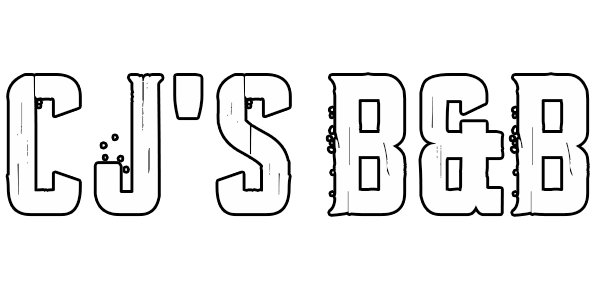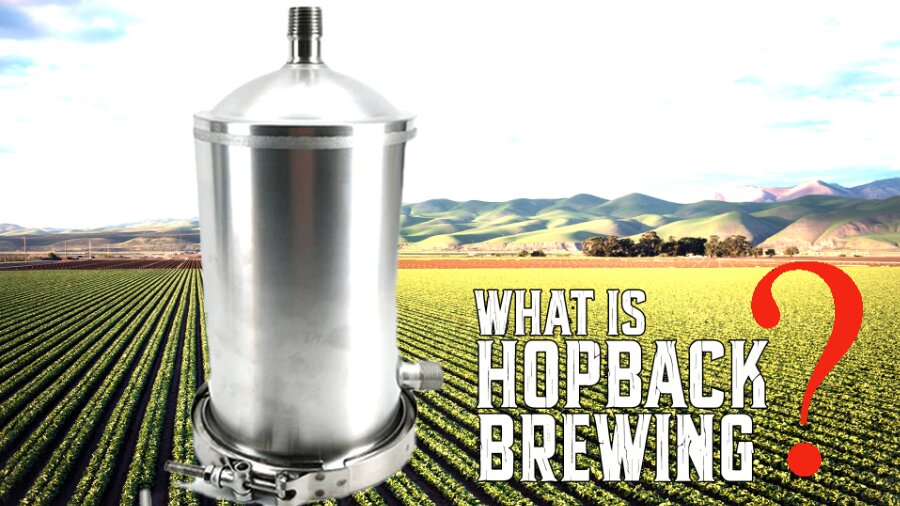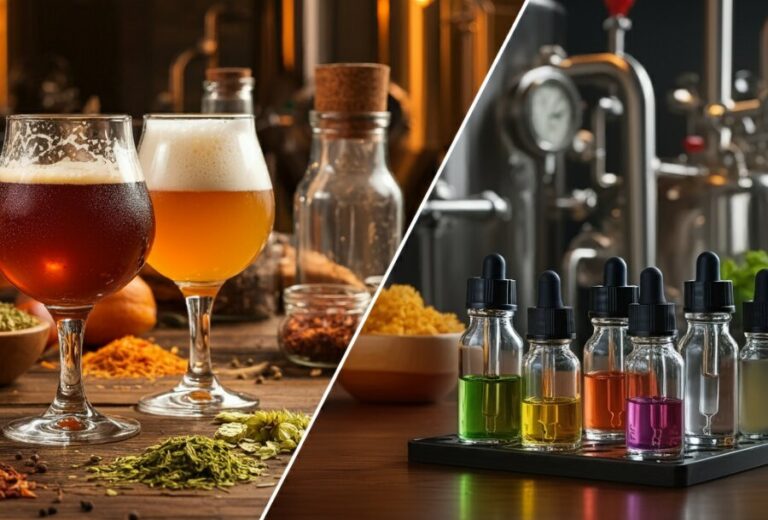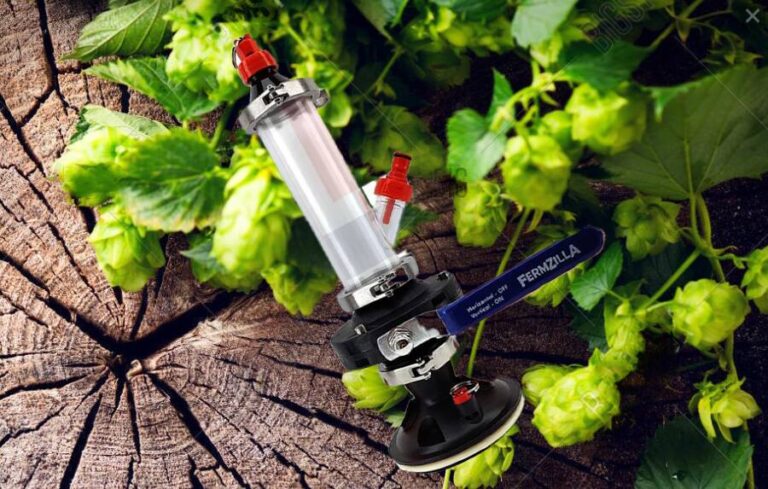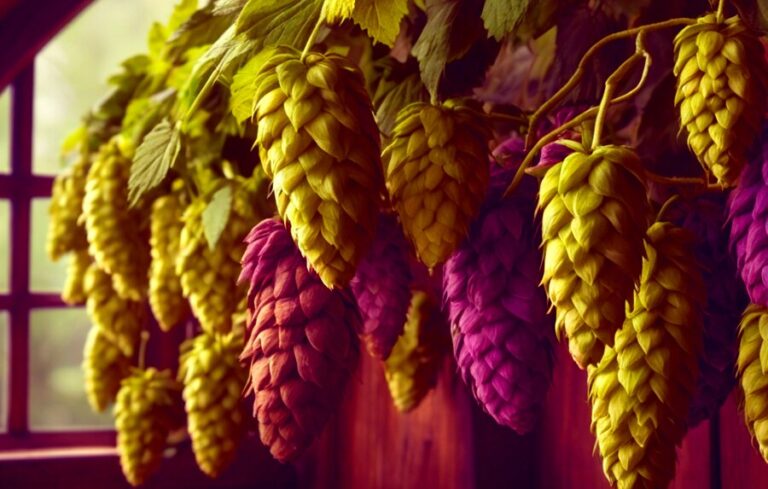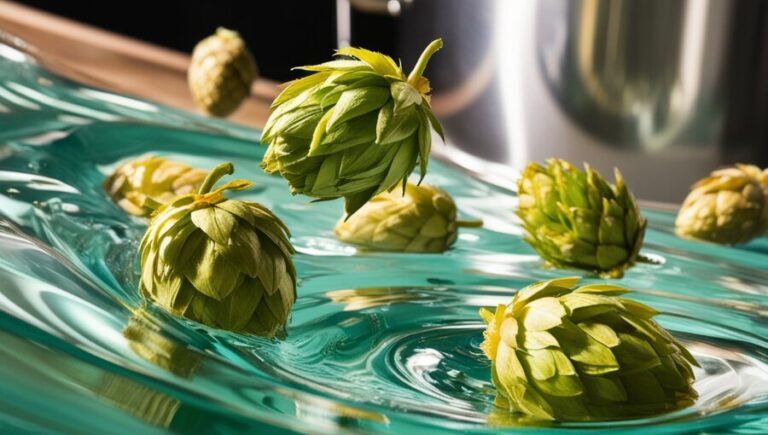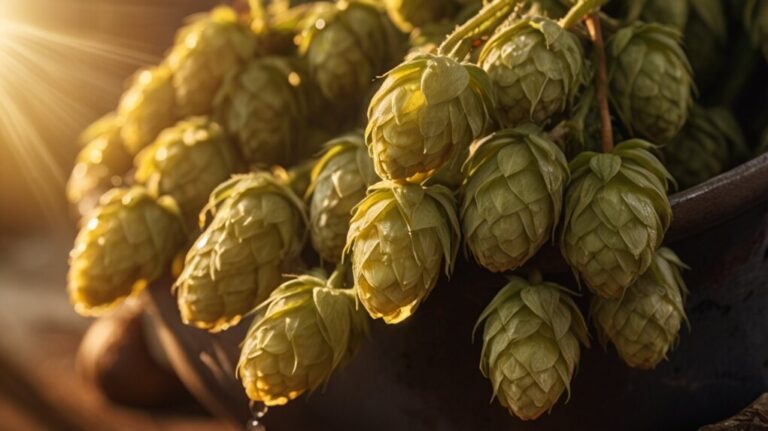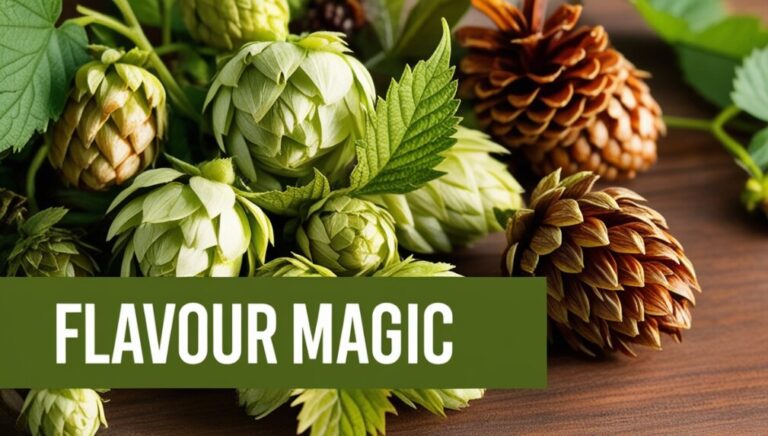Our evaluations and product assessments are conducted using a thorough and unbiased approach. Should you choose to buy any items through our provided links, we might receive a commission Read our disclosures.
Boosting Homebrew Aromas
Homebrewing is my jam, especially when it comes to making those hops sing with hopback brewing. Here’s how I crank up the hop flavours to brew aromatic, tasty beers.
Getting the Most Out of Hops
Timing and technique are everything. If hops hang out in the heat too long, they get all bitter instead of flavourful. Most of the bitterness comes out in the first 20 minutes of boiling, and hop oils can vanish by half in just 15 minutes (Beer and Brewing). So, I play around with post-boil tricks like:
| Technique | What It Does | Best For |
|---|---|---|
| Flame-Out Hopping | Tossing hops in right after turning off the heat | Boosting aroma without adding bitterness |
| Whirlpool Additions | Adding hops during the whirlpool phase | Getting oils out while keeping bitterness in check |
| Using a Hopback | Running hot wort through a hop-filled chamber | Infusing fresh hop aromas into the beer |
These methods help me keep those delicate hop oils intact and make my brews burst with flavour.
Extracting Aromas Like a Pro
One of my secret weapons is the hopback. It’s a chamber packed with whole hop cones or pellets. When hot wort flows through, it grabs all those essential oils and aroma compounds. This “hot-side hopping” gives my beers a fresh, vibrant hop kick (Medium).
Hopbacks also let me tweak the balance between bitterness and aroma. By playing with different hop types, amounts, and timing, I can nail the hop profile I’m after. I love experimenting with various hops to see how they change the final flavour. For more on hop varieties and their effects, check out hop varieties for flavor.
These techniques don’t just make my brews smell amazing—they create complex, enjoyable flavours that keep my friends coming back for more. In homebrewing, nailing the hop game can make all the difference.
Post-Boil Techniques
Using post-boil techniques can really amp up the aroma and flavour of my homebrew. I often go for flame-out hopping, whirlpool additions, and hopback brewing to keep those precious hop oils intact and make my beer taste amazing.
Flame-Out Hopping / Hopstand
Flame-out hopping is all about adding hops to the wort right after you turn off the heat. This way, I can get those aromatic oils without boiling them away. Adding hops at this stage gives my brews a more vibrant and pronounced hop flavour. It’s especially good for boosting aroma since the hops steep in the hot wort for a bit before cooling down.
| Flame-Out Hopping Benefits | Details |
|---|---|
| Aroma Boost | Keeps those volatile hop oils intact |
| Flavour Kick | Adds a fresh hop profile |
| Flexibility | Works with different hop varieties |
Want more on hop methods? Check out my article on hop additions for aroma.
Whirlpool Additions
Whirlpool additions mean tossing hops into the wort while it’s being stirred after the boil. This creates a whirlpool effect, letting the hops mix with the wort as it cools. The whirlpool method not only boosts flavour but also helps clarify the beer by letting sediment settle.
One cool thing about whirlpool additions is that I can control the temperature for extracting flavours. Adding hops at lower temps lets me focus on aroma without adding too much bitterness.
| Whirlpool Additions Benefits | Details |
|---|---|
| Flavour Control | Adjust temp for the perfect extraction |
| Clarification | Helps sediment settle for clearer beer |
| Aroma Preservation | Less exposure to high heat |
For more insights, check out my piece on whirlpool hopping techniques.
Using a Hopback
A hopback, also called a hopjack or hop cannon, is a game-changer in my brewing setup. This vessel sits between the boil kettle and the wort chiller. Its main job is to infuse the wort with the aromatic essence of hops. Running hot wort through a container filled with whole leaf hops gives my beer a cleaner, fresher, and crisper hop presence.
The HopRocket technique, a specific type of hopback, has shown big advantages in my brewing. In a comparison, a 10-gallon batch brewed with the HopRocket had clearer wort and better hop flavour than the standard knockout hops method, which ended up with a sharper bitterness.
| Hopback Brewing Benefits | Details |
|---|---|
| Clearer Wort | Less haze compared to kettle additions |
| Enhanced Aroma | Keeps hop oils better than boiling |
| Crisp Flavour | Gives a fresher taste in the finished beer |
If you’re curious about hopback brewing techniques, check out the advanced hopping techniques that can take your homebrewing to the next level. Using these post-boil methods can really transform the flavour and aroma of my homebrew, making each batch a delightful experience.
Dive into Hopback Brewing
Using hopbacks in my brewing process has truly transformed the flavours and aromas of my homebrews. Here’s how I build, operate, and maintain my hopback for maximum efficiency and effectiveness.
Building Your Hopback
Constructing a hopback can be quite straightforward and rewarding. I typically use a stainless steel pot, weldless brass fittings, and a sink filter. The basic design requires drilling 1/2″ holes neatly and safely, which can be done with the right tools. Here’s a simple list of materials I find essential for the build:
- Stainless steel pot
- Weldless brass fittings
- Sink filter
- Drill with a 1/2″ bit
- Two ball valves (for better flow control)
Design customization can enhance efficiency. I’ve moved the outflow valve to the base of the pot to make it easier to collect the hop-infused wort. The use of a simple stainless sink filter helps to catch hop debris, ensuring a clean pour. For more details, I recommend checking out the guide on building a hopback from the American Homebrewers Association.
Operating a Hopback Efficiently
When operating my hopback, I focus on controlling the flow using the main outlet valve. This ensures that the hot wort passes through the hops efficiently, extracting maximum aroma without clogging. A second ball valve can be added for even better flow control. The hopback acts as both an inline filter and an infusion chamber, which is ideal for enriching my beer with fresh hop character right before consumption. This method captures and preserves volatile hop oils, which greatly enhances the final aroma of the brew.
| Component | Function |
|---|---|
| Stainless Steel Pot | Main body for infusion |
| Ball Valves | Flow control |
| Sink Filter | Debris removal |
Cleaning and Maintenance Tips
Maintaining cleanliness is crucial for any brewing equipment, especially a hopback. I always clean my hopback with sanitizer before use to prevent contamination. After brewing, I dismantle the hopback and thoroughly clean each component, ensuring that any residual hop debris is removed.
Regular maintenance also includes checking for any wear or tear on the fittings and valves. It’s important to ensure everything is in good condition to prevent leaks or inefficiencies during the brewing process. For additional resources on cleaning and maintenance, you can explore advanced hopping techniques.
Using hopback brewing techniques has allowed me to amplify the flavours and aromas in my homebrews significantly. I encourage others interested in enhancing their brewing experience to give this method a try.
Discovering Dry Hopping
Brewing at home has taught me a lot, but one of the coolest tricks I’ve picked up is dry hopping. This nifty method involves tossing hops into the mix after the boil, giving your beer a serious aroma and flavour boost without adding bitterness.
Aroma Magic
When I dry hop, the hops’ oils work their magic, infusing the beer with irresistible aromas. Unlike the usual bittering hops added during the boil, dry hopping zeroes in on the hops’ aromatic qualities. It doesn’t mess with the bitterness levels (IBUs), but it does add a resiny kick that makes my beer pop.
Here’s how I usually roll with dry hopping:
| Dry Hopping Technique | Aroma Boost | Timing |
|---|---|---|
| Single addition | Bold aroma | 3-5 days before bottling |
| Staged additions | Layered scents | 1-2 days apart |
| Hop blends | Complex aroma | Varies |
Mixing different hop types or doing staged additions can really amp up the flavour, making my beer richer and more aromatic. For more on these methods, check out our article on dry hopping techniques.
Mixing It Up with Hops
Layering different hop varieties during dry hopping can create a more complex and nuanced aroma in my homebrew. By mixing hops with distinct aromatic profiles, I can tailor the final scent to match the style I’m aiming for. For instance, combining floral and citrus hops can provide a delightful bouquet that complements a pale ale or IPA.
I’ve found that hop blends are particularly advantageous, as they help insulate my brewing process from fluctuations in hop availability and quality (BeerSmith). By blending, I ensure a consistent flavour in my brews, allowing me to replicate favorites more easily.
When using a hopback in conjunction with dry hopping, I can balance the two methods effectively. I typically use approximately twice the weight of hops in dry hopping to achieve a similar aromatic impact as when I use the hopback. This balance ensures that neither method overwhelms the other (Brew Your Own).
In summary, both the impact of aroma and the layering of hop varieties play critical roles in maximizing flavour and aroma in my homebrews. I’ve found that exploring these techniques not only enhances my brewing experience but also helps me create beers that are uniquely my own. For further exploration of hop varieties that can elevate aroma, visit our guide on hop varieties for flavor.
The Magic of Hop Forms
Brewing beer is like painting a masterpiece, and the hops you choose are your colors. The form of hops you use can make a world of difference in the flavours and aromas of your brew. Whether you go for whole flower hops, pellet hops, or various extracts, each brings its own unique twist to your homebrew.
Whole Flower vs. Pellet Hops
Whole flower hops, also known as cone hops, are the OGs of the hop world. They keep their natural oils intact, giving your beer a rich flavour and aroma. But, they can be a bit of a diva when it comes to efficiency.
Pellet hops are the modern twist. They’re made by grinding whole hops into a powder and pressing them into small pellets. This increases the surface area, making it easier to extract those delicious flavours and aromas.
| Hop Type | Form | Aroma Intensity | Flavour Profile | Utilization Efficiency |
|---|---|---|---|---|
| Whole Flower | Cone | Moderate | Bold, earthy notes | Lower |
| Pellet | Pellet | High | Bright, citrusy notes | Higher |
Pellet hops can give your beer a more intense hop character, especially in hop-heavy styles like IPAs. For a deeper dive into different hop varieties and their flavours, check out my article on hop varieties for flavor.
Extracts and Powders
In my brewing arsenal, I also have hop extracts and powders. These are like the secret weapons of brewing, delivering powerful hop flavours with just a small amount. They’re perfect for getting intense hop aromas without turning your beer into a bitter mess.
Hop extracts come in liquid form and are packed with concentrated oils and acids. They’re great for late additions or dry hopping. Powders, though less common, offer another concentrated option and can be perfect for specific brewing techniques.
| Hop Form | Concentration Level | Best Use Cases | Aroma/Flavour Characteristics |
|---|---|---|---|
| Extract | Very High | Late additions, dry hopping | Strong and intense |
| Powder | High | Specialty brews, unique profiles | Varies, often potent |
Using extracts and powders can take your brewing to the next level, especially when you’re aiming for a specific aroma or flavour. For more tips on optimizing hop additions for aroma, check out my article on hop additions for aroma.
Understanding the different hop forms has let me experiment and fine-tune my brewing process. Whether I’m using whole flower hops for a classic style or pellet hops for a bold flavour, the form of hops I choose is a game-changer. If you’re looking to up your brewing game, don’t miss my article on advanced hopping techniques.
Regional Hops and Flavour
Getting the hang of how regional hops shape the taste of my homebrew beer has been quite the adventure. Where hops come from—think climate, soil, and growing conditions—really changes their flavour. Different places grow hops with unique traits, which then tweak the beer’s overall taste.
Climate and Soil Effects
The weather where hops grow is a big deal. Hops love certain climates, and changes in temperature and rain can mix up their flavour. Cooler climates usually give hops a softer aroma and taste, while warmer spots make them bolder and more intense.
Soil matters too. Rich, fertile dirt helps hops grow better, boosting their aroma. Here’s a quick look at how climate and soil affect hops:
| Region | Climate Type | Flavour Characteristics |
|---|---|---|
| Pacific Northwest (USA) | Temperate | Citrus, pine, floral |
| Bavaria (Germany) | Continental | Earthy, herbal, spicy |
| New Zealand | Maritime | Tropical fruit, stone fruit |
| Czech Republic | Temperate | Grassy, herbal, mild |
These differences make it fun to try hops from different places when brewing.
Flavour Profiles from Different Origins
Hops taste different depending on where they’re from. Check out these hop varieties and their typical flavours:
| Hop Variety | Origin | Flavour Profile |
|---|---|---|
| Cascade | USA | Grapefruit, floral |
| Hallertau | Germany | Mild, herbal, earthy |
| Nelson Sauvin | New Zealand | Sauvignon Blanc, tropical fruits |
| Saaz | Czech Republic | Spicy, earthy, herbal |
When picking hops for my homebrew, I think about these flavours to make my beer taste just right. Mixing hops from different regions can create some pretty cool and complex flavours.
Using hopback brewing techniques can also boost these flavours. Running wort through a container filled with whole leaf hops can give a stronger hop aroma and taste while filtering out unwanted stuff. This method not only clears the wort but also keeps the hops’ aromatic qualities, making my homebrew even better.
As I keep exploring hops, I find that knowing how regions affect flavour is key to getting the best aroma and taste in my brews. Whether I’m using dry hopping methods or adding various homebrew flavor enhancers, I can confidently make beers that show off the unique traits of the hops I pick.

